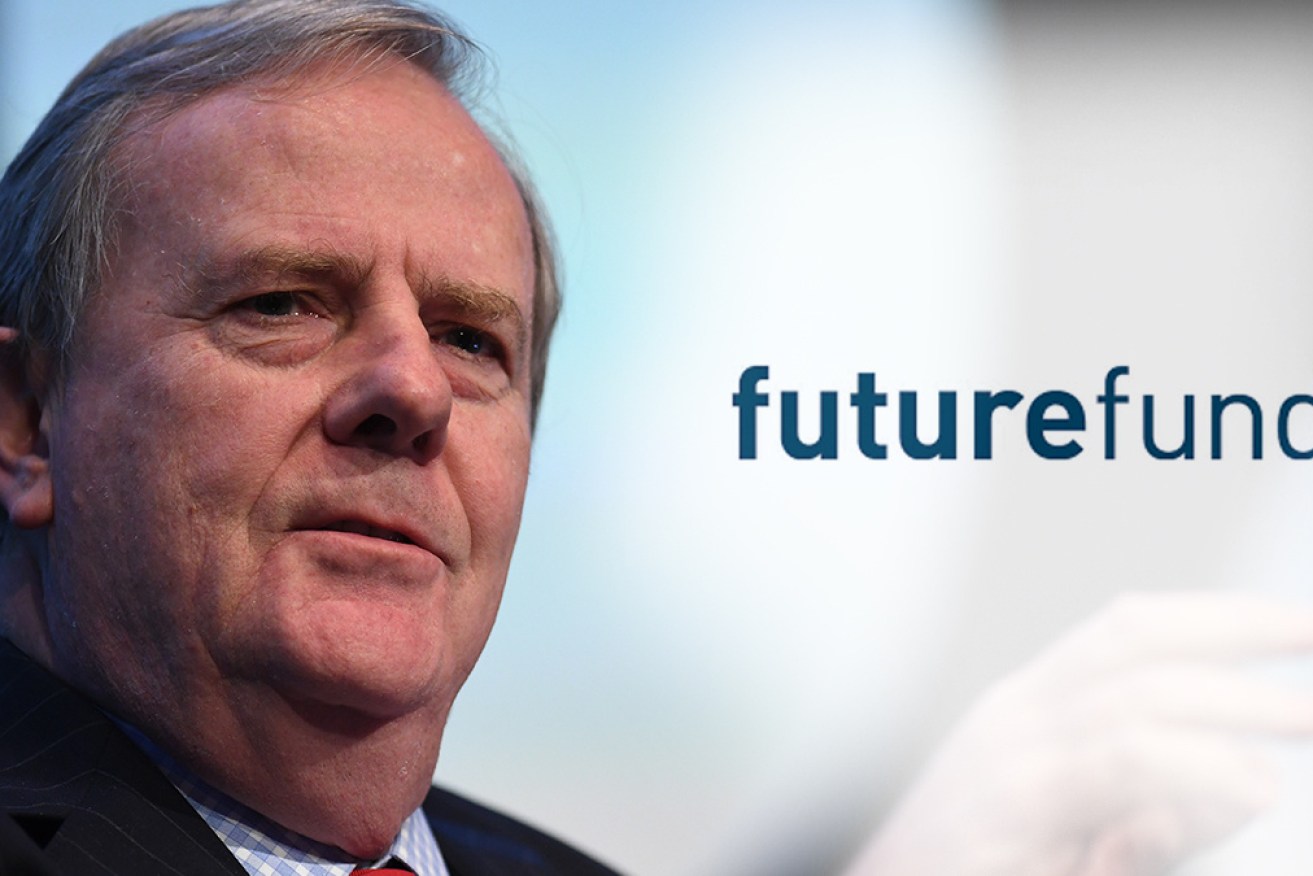The Future Fund is taking risks with junk bonds and business loans


Future Fund chair Peter Costello says the fund is making money out of its unusual investment strategy.
The Commonwealth government’s $162 billion sovereign wealth investor the Future Fund is a far more aggressive investor in fixed interest than similar superannuation funds, according to analysis from research group Chant West.
A cursory glance at the Future Fund’s investment balance sheet would yield the assessment that it was a conservative investor with about half its assets in aggressive growth categories and the rest in defensive strategies.
“If you look at the Future Fund it appears to be a 50/50 fund not a 70/30 fund [with 70 per cent growth assets] like the average balanced, or growth, superannuation fund where most Australians have their super invested,” said Ian Fryer, research chief with superannuation consultancy, Chant West.
However that assessment would be made on the basis the Future Fund had a defensive debt portfolio, which is not the case on close examination, Mr Fryer said.
A different beast
That makes its investment strategy different from the average industry superannuation fund. Industry funds are a good comparison with the Future Fund because they are long term investors charged with looking after the retirements of workers.
The Future Fund was established to meet the Commonwealth’s liabilities for old style defined-benefit superannuation schemes enjoyed by public servants until recent years.
The Future Fund is a more aggressive investor than industry funds in the fixed interest space, which typically involves investing in low risk bonds.
“Most industry super funds have have most of their fixed interest exposure in government, semi-government and investment-grade corporate debt with smaller allocations to private debt and high yield credit,” Mr Fryer said.
However, the Future Fund’s debt portfolio, – which accounts for 9.7 per cent of its total investments – is very different, as the chart above demonstrates. While industry (and retail) funds have the vast majority of their fixed interest allocation in conservative government bonds, the Future Fund has virtually no allocation there.
The largest allocation in the Future Fund fixed interest portfolio is to private debt, which is loans made to individual companies either directly or through dedicated funds.
“They are considered high risk and are often loans made to companies that can’t get money elsewhere,” Mr Fryer said.
Junk bonds
The next highest allocation is to sub-investment grade company bonds, colloquially known as ‘junk’ bonds because in return for high interest rates they are deemed risky as they are made to companies more conservative lenders avoid.

Infrastructure is a favoured asset for long term investment funds. Photo:AAP
The next largest allocation is to emerging market bonds. They back loans raised by governments of countries with riskier economies and financial systems than major developed nations.
Another 10 per cent is invested in mortgage-backed and other securitised loans which are packaged in bundles and sold to third party investors. They are the category that triggered the Global Financial Crisis.
Some other parts of the Future Fund’s portfolio seem more conservative than traditional industry funds. The Future Fund had only 33.7 per cent of its assets in listed equities while the average industry fund has 52.4 per cent in that volatile category.
The debt exposure of the Future Fund has been fluctuating in recent years. The fund’s chief investment officer Raphael Arndt told a media briefing last week that, “We’ve been shrinking our debt exposure for some years, as well. And, in fact, going into this event it was only 50 per cent the size that it once was”.
That’s true over the long term with debt peaking at about 25 per cent of the portfolio back in 2009, in recent years it has fallen from 10 per cent down to 8 per cent but rose back to 9.7 per cent in March, partly because of a weaker local currency.
A patient investor
The more aggressive debt position is not necessarily a negative for a long-term investor like the Future Fund, which is not scheduled to pay out on the governments superannuation needs till 2026.
“Because it is not paying out to members the way a conventional super fund does it can afford to be a longer-term investor,” said independent economist Saul Eslake.
Mr Fryer also said the fund’s long time horizon meant the riskier fixed interest positions could turn out well.
The fund’s chairman, former treasurer Peter Costello, told the media briefing it had suffered a negative return of 3.4 per cent for the March quarter and 0.2 per cent for the financial year to date. The year-to-date figure would have been negative 3.5 per cent if the fund had devalued its unlisted assets by 7.5 per cent, as many other funds had done in response to the current crisis.
Another unusual investment strategy for the fund is its approach to private equity.
“Our hedge fund [alternative assets] position is very slanted to venture capital and skewed away from leveraged buyouts,” Mr Costello said.
The fund had made returns of 20 per cent on some of that private equity position, he said.
The fund had written down the value of its infrastructure assets by 15 per cent, he said. Median growth superannuation funds performed worse than the Future Fund, losing 10.1 per cent in the March quarter. Mr Costello has called for the Future Fund to be able to compete in the general superannuation market.
The New Daily is owned by Industry Super Holdings








